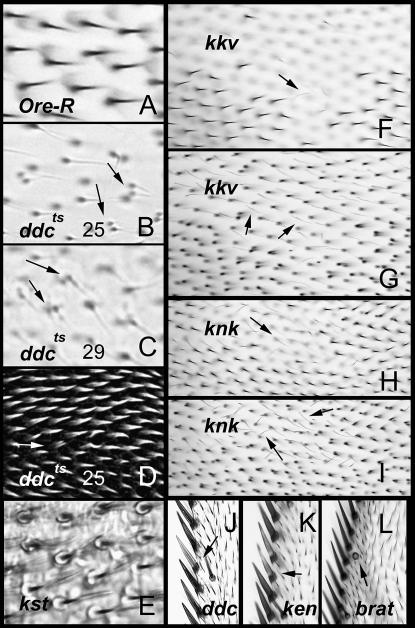Figure 2.
Phenotypes in adult wings. (A–C) Micrographs of adult wings from Oregon R, Ddcts raised at 25° and Ddcts raised at 29°. The arrows point to double hair cells on the Ddcts wings. Note how light and fine the Ddcts wings are. (D) A Ddcts pupal wing stained with a fluorescent phalloidin. Note that the hairs are of normal thickness (compare to Ore-R from Figure 1E). An arrow marks a double hair cell. (E) A micrograph of an adult wing from a kst escaper fly. The wing is resting on a glass microscope slide but is not in mounting media. Note the circular pedestals around the hairs. (F and G) Wings that contain unmarked kkv clones. F and G are of different focal planes. F shows a region with normal hairs and a region (presumably a clone) with little or no sign of hairs (an arrow points to one faint hair). The hairs appear to be missing because they are faint and lay flat on the wing surface unlike wild-type hairs, which are elevated. At a lower focal plane the hairs can be seen (G). (H and I) An equivalent pair for a wing that contains unmarked knk clones. (J–L) The wing margin from three mutants. J and K show wings that contain unmarked Ddc and ken clones, respectively. The lightly pigmented bristles are presumably part of mutant clones. L shows a region from a bratts mutant that is missing a bristle shaft. This phenotype was common in such wings.

